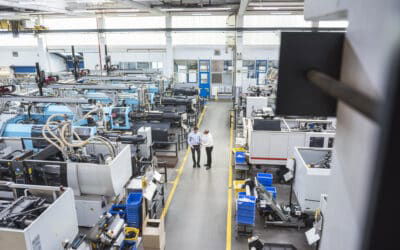In modern industry, machine supervision plays a key role in optimizing performance and managing production infrastructures. Thanks to advances in computing and monitoring solutions, companies can improve equipment availability, prevent breakdowns, and maximize efficiency. This article explores the tools and software used in supervision, their role in the industry, and the benefits they bring to companies in terms of control, safety, and data management.
What is Machine Supervision?
Definition and Objectives
Machine supervision refers to the set of processes and applications used to monitor, control, and optimize industrial equipment. It relies on a system capable of collecting real-time data, analyzing machine status, and sending alerts in the event of a problem. The primary goal is to ensure optimal performance by guaranteeing equipment availability and safety while reducing the risk of production downtime.
Importance in the Industry
In an industrial environment, supervision is essential for optimizing resource usage and improving equipment management. In France and beyond, companies rely on monitoring solutions to detect anomalies and boost productivity. Implementing supervision software not only increases performance but also enhances the management of servers, networks, and production infrastructure.
Supervision Tools and Software
Introduction to SCADA Software
SCADA (Supervisory Control and Data Acquisition) systems are essential tools in industrial supervision. They collect and analyze machine data to optimize production process management. These software packages provide an interface for real-time control, enhancing equipment safety and availability.
Key Features of Supervision Tools
Supervision software includes several key features, such as real-time monitoring, alert management, and performance analysis. Some tools offer light-based alert systems, advanced user interfaces, and plugins for better customization. Compatibility with networks and servers ensures optimal data availability, thereby supporting better management of industrial resources.
Optimizing Industrial Performance through Supervision
Cost Reduction and Efficiency Improvement
Using a supervision tool allows companies to optimize resource usage and reduce costs related to maintenance and production interruptions. By monitoring real-time data, companies can identify inefficiencies and enhance overall performance. A well-implemented solution also allows early detection of machine failures, helping to avoid costly repairs and unexpected downtime.
Failure Prevention and Continuous Monitoring
With a monitoring system in place, industries can detect anomalies before they become critical. Supervision tools enable data analysis and precise control over machine operation. The installation of dedicated servers and software facilitates remote access to information, ensuring continuous supervision and better incident management.
Frequently Asked Questions about Machine Supervision
What is a supervision tool?
A supervision tool is a software or system used to monitor and control industrial infrastructures. It collects real-time data, analyzes performance, and generates alerts in case of anomalies. These solutions are used to ensure safety, availability, and optimal resource utilization.
What is supervision?
Supervision refers to all the techniques and tools used to monitor, analyze, and control a system or network of machines. It plays a crucial role in industry by ensuring efficient management of data and production processes through specialized software.
What are the different types of supervision?
There are several types of supervision, including industrial supervision, which focuses on monitoring machines and infrastructures, and IT supervision, which covers networks, servers, and digital systems. Some companies also use specific solutions like Nagios for monitoring data and applications.
What is the supervision function?
The supervision function consists of monitoring, controlling, and optimizing a system to ensure its availability, safety, and performance. It enables the detection of problems, anticipation of failures, and smooth management of resources and information.





0 Comments